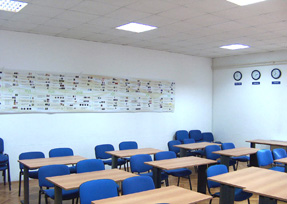Listing all heating technologies used in the school:
In order for the school management to understand the cost of heating and cooling, the first step is to chart out all the appliances used in the process. A common way to heat schools is to use strip heaters in classrooms apart from a centralized heating solution. Drawing up a floor plan of heaters, areas serviced, and airflow patterns will help get a clear idea of the effectiveness of the school’s heating and cooling systems. Notations on the floor plan should include the settings on the thermostats, fuels used, the setting of the timers.
Looking for energy efficient substitutes:
Having inventoried the existing appliances the school may need to substitute existing appliances for more energy efficient ones. This can include the installation of high efficiency boilers and heaters. The school management may also look into the need for reinforcing the insulation found in the premises in order to minimize losses from heat distribution systems.
Some solutions to reducing the cost of heating or cooling in a school premise include:
•��� Room heaters that release heat at a head level can be complemented by slow moving ceiling fan. The fan will blow the warm air downwards on to the class’s occupants. This can also help in additional cooling during summer by evenly distributing the cold air within the room.
•��� Students and staff need to be educated about changing the thermostat controls of a class room. The ideal temperature to set the thermostat is between 18C and 20C.
•��� It is crucial that heaters be switched off when not in use. One way to ensure this is to appoint a class monitor whose task is to check if heaters, lights etc are switched off when not in use. Another way is to set automatic timers to turn off heaters at a specified time.
•��� Heaters can be switched off 30 to 45 minutes before the end of the day. The heat accumulated within the premises will be sufficient enough to keep the occupants comfortable.
•��� Pilot lights in gas heaters should be switched off before long holidays and periods in which the school will not be working.
•��� Installing door closers on all doors will help in preserving the room’s cool or warm air within the room.
•��� Reducing air leaks in class rooms will help improve efficiency and stop cold draughts from entering, thus reducing overall heating costs. Doors and windows should be closed and vents should be sealed especially those located near the ceiling and skylights. However it should be noted that adequate ventilation is necessary and the room should not become completely airtight.










